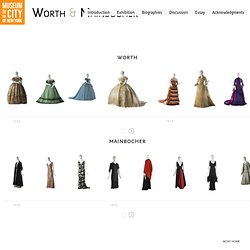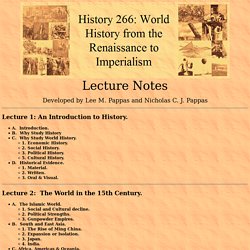

Collections Portal. Introduction Exhibition Biographies Discussion Essay Acknowledgments.

Titanic Dinner. Klondike Pennys Old Time Portraits. Lady Washington. Crinolines, crinolettes, bustles and corsets from 1860-80. From 1866 the crinoline craze began to subside.

In this year the magazine Le Follet announced: 'The size of the crinoline is very sensibly diminished, but it cannot be altogether dispensed with while the dresses are so very long'. This helps account for the small size of many crinolines in the Victoria and Albert Museum's collection, for example the red Thomson's crinoline of 1867. Punch, not to miss an opportunity for humour, anticipated a new use for discarded crinolines - as plant protectors during the winter! They were fashionable between 1867 and the mid 1870s. They were often composed of half hoops with extra loops of steel at the top to give more support. Cage crinoline, manufactured by W S and E H Thomson, 1865-68. Crinolette, about 1870. Bustle, about 1875. During the 1870s the bustle became a separate undergarment in its own right. Punch, publication, 1874 Crinolettes and bustles were probably more restrictive than crinolines. 'The Wasp Waist', photograph, 1890s.
Demorest's illustrated monthly and Mme Demorest's mirror of fashions, 1865 April. Victorian high-style vintage clothing at Vintage Textile. 19th-century fashion. Religion in Victorian Britain. Chapter Two: Willing To Be. He English have been accused by foreigners of being the beau-ideal of a suicidal people, The charge is almost too ridiculous to merit serious refutation. It has clearly been established that where there is one suicide in London, there are five in Paris,"1 Forbes Winslow's words typify Victorian defensiveness over England's seemingly undeserved reputation as "la terre classique du suicide. " England's fogs, her earnestness, her graveyard school and poetry of melancholy had given rise to a French myth that was difficult to dispel.
By 1800, England had become known as the European center of suicide: home of Edward Young who had cried "O Britain, infamous for suicide" (Young, 5.442) home of Robert Blair who had exclaimed "Self-murder! Name it not: Our island's shame/ That makes her the reproach of neighbouring stares"(Blair, 2.403-4) and home of Chatterton, boy wonder and romantic suicide par excellence, whose celebrated early death seemed a glorious martyrdom to Europe's artists. Dictionary of Victorian London - Victorian History - 19th Century London - Social History. V&A Home Page. The Victorian Web: An Overview.
A whole lot more. Channel 4 - History. History - Victorian Britain Trail. Victorian Web Sites - The Victorian Literary Studies Archive - ƒ”ƒBƒNƒgƒŠƒA’© British Paintings. Database of Mid-Victorian Illustration. Planet Century 19. Victorian Literature. Search Results: Victorian. History 266: World History from the Renaissance to Imperialism. Lecture Notes Developed by Lee M.

Pappas and Nicholas C. J. Pappas Lecture 1: An Introduction to History. A. Lecture 2: The World in the 15th Century. A. Lecture 3: Fifteenth Century Europe: Social and Economic Changes A. Lecture 4: Fifteenth Century Europe: Cultural Changes: The Renaissance. A. Lecture 5: Sixteenth Century Europe: Cultural Changes--The Reformation. A. Lecture 6: Lecture Protestants, Catholics and the Wars of Religion. While Lutheranism was essentially sober, restrained, and moderate in nature as it spread throughout Germany and Scandinavia, the Protestant wave produced far reaching religious change in other areas in Europe.
Lecture 7: The Ottoman Empire and the Muscovy. A. Lecture 8: The Expansion of Europe: Initial Phase and General effects, 1400-1600. Overview: The European discovery of America was a complete accident: a momentous piece of serendipity on the part of men who had set out to look for something else.
Queen Victoria. Alexandrina Victoria, the only child of Edward, Duke of Kent and Victoria Maria Louisa of Saxe-Coburg, was born in 24th May 1819. The Duke of Kent was the fourth son of George III and Victoria Maria Louisa was the sister of King Leopold of Belgium. The Duke and Duchess of Kent selected the name Victoria but her uncle, George IV, insisted that she be named Alexandrina after her godfather, Tsar Alexander II of Russia. Victoria's father died when she was eight months old. The Duchess of Kent developed a close relationship with Sir John Conroy, an ambitious Irish officer. Conroy acted as if Victoria was his daughter and had a major influence over her as a child. On the death of George IV in 1830, his brother William IV became king. William IV died 27 days after Victoria's eighteenth birthday. Lord Melbourne was Prime Minister when Victoria became queen. Victoria and Melbourne became very close.
Some people objected to this close relationship. Quick animated guides.